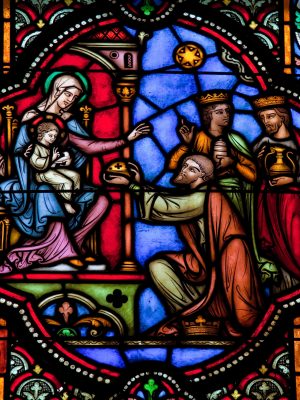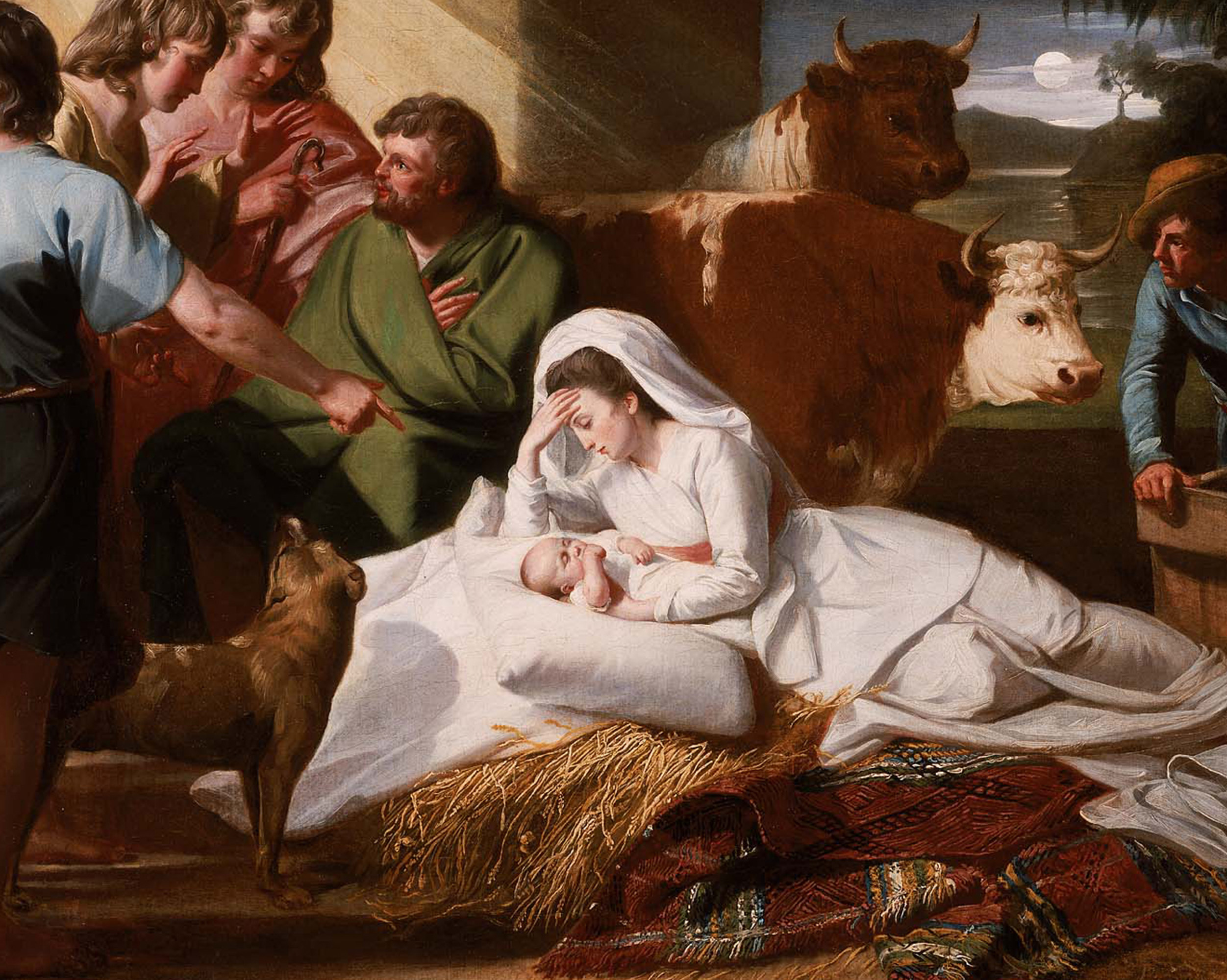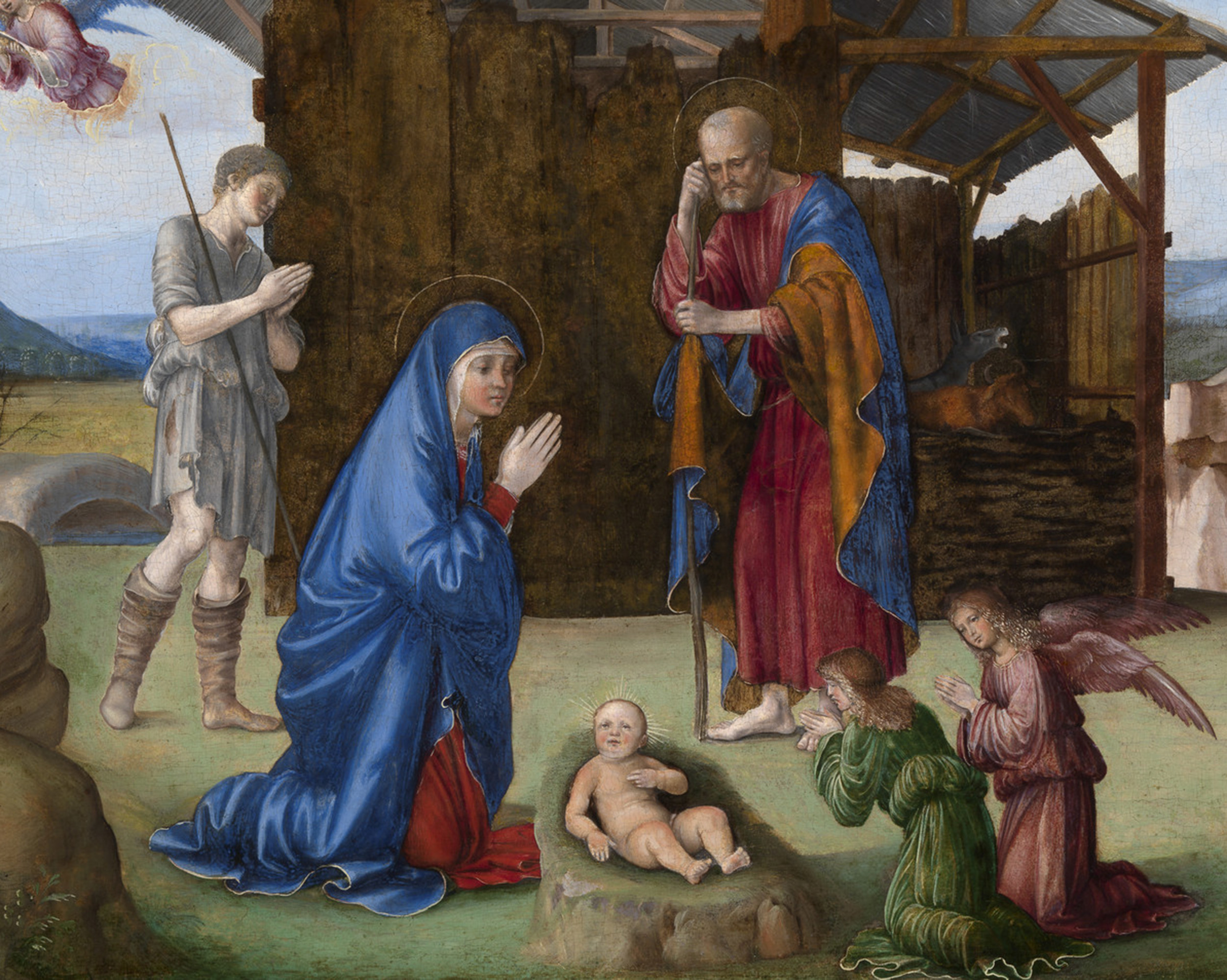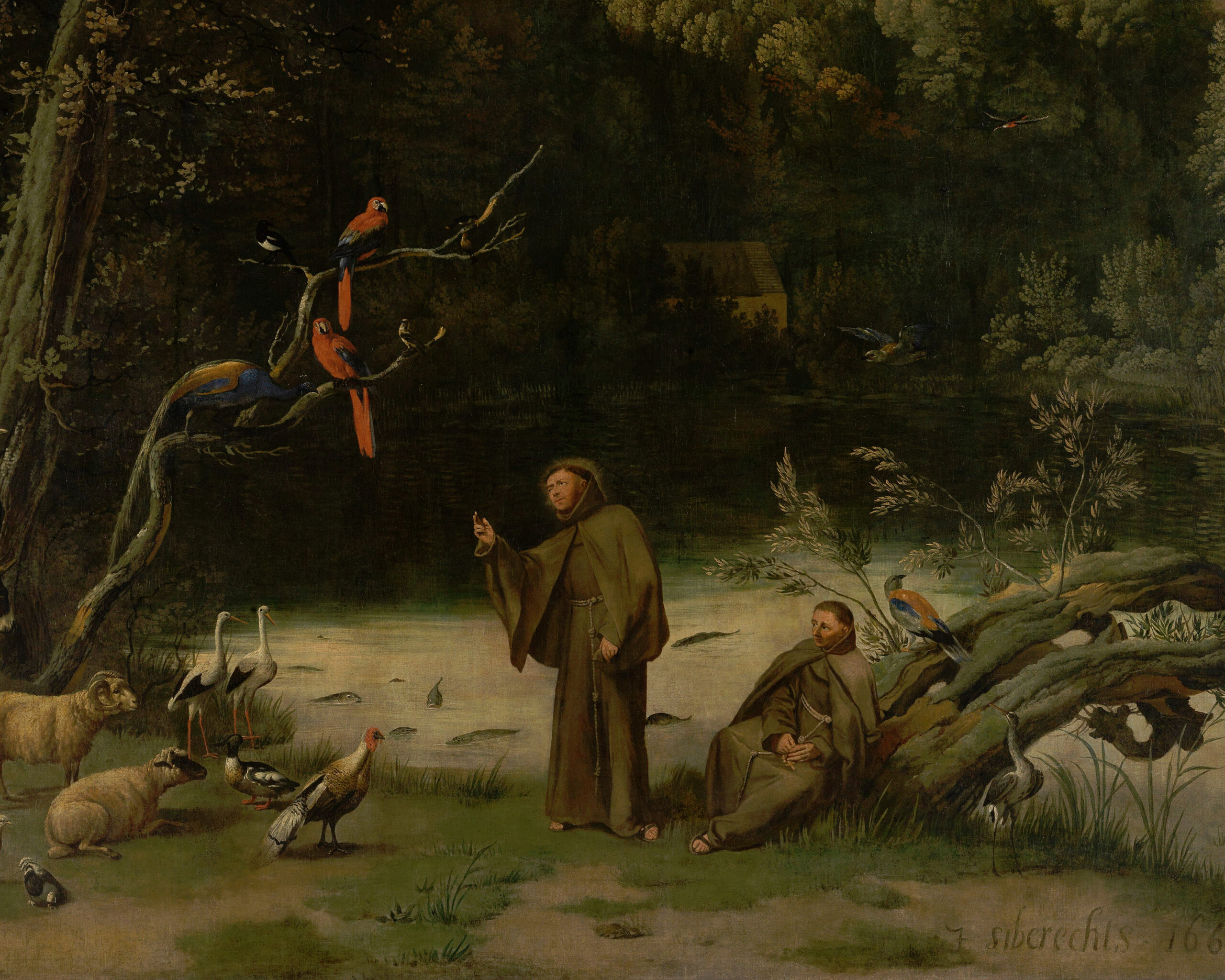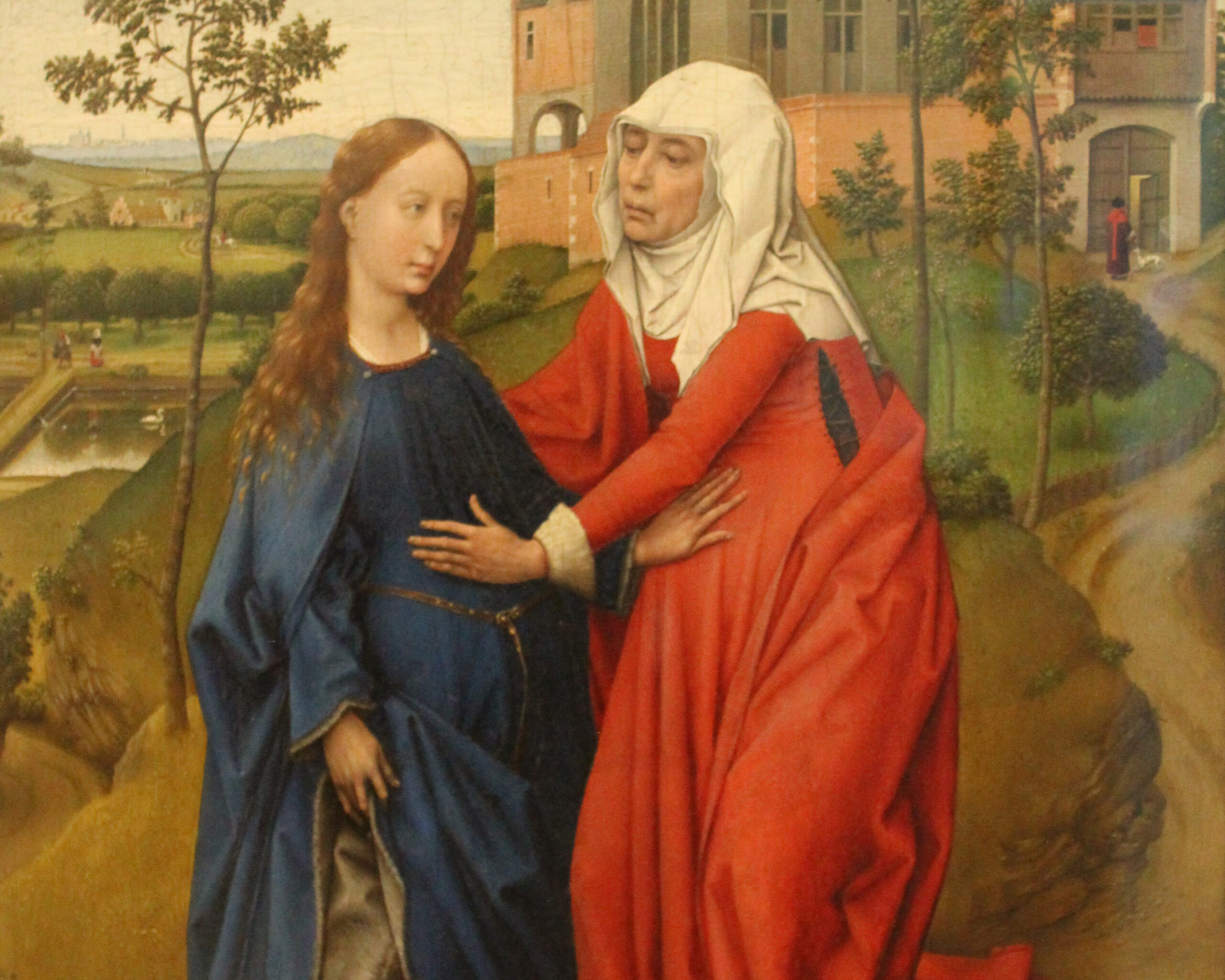“The kings of Tharsis and of the islands shall offer presents, alleluia. The kings of Arabia and of Saba shall bring gifts, alleluia.”
—Roman Ritual, Blessings at Meals on Epiphany and Octave (cf. Psalm 71 (72): 10).
On January 6, the annual feast of the Epiphany of Our Lord is celebrated as an extension of Christmas. It is the twelfth day since the birth of Emmanuel.
In the liturgical life of the Roman Church, the feast of the Epiphany is a big deal, an important feast that has many customs and traditions.
Although the magnitude of this feast is sometimes forgotten today, it is celebrated the world over by Catholics of East and West, highlighting various traditions celebrated by different communities and families.
These traditions are not dying out, but in many cases are being revived on the local level in the context of the parish and family.
On the Vigil of the Epiphany (Jan. 5th), some Latin Rite traditional priests pray a rare “Blessing of Water,” a rite of oriental inspiration that includes efficacious prayers of exorcism against Satan and the apostate angels that includes an exorcism of the water.
This blessing was adopted by the Latin Rite Roman Ritual in the year 1890, in remembrance of the mystery of Our Lord’s Baptism in the Jordan and by analogy our baptism. The holy water is used the following day and weeks for Epiphany house blessings.
There is also in the Roman Ritual a special “Blessing of Chalk” and “Blessing of Homes” on Epiphany that includes the chalking of lintels with blessed chalk, sanctifying the main entrance to the home with the names of saints Caspar, Melchior and Balthazar, while invoking heaven’s special protection.
In other Catholic countries such as Poland, the day is celebrated with “Three Kings” winter parades, Nativity plays, and visits to manger scenes that have been enhanced with statues of the Magi who have finally arrived.
The History and Theology of the Feast
Epiphany recalls a major event in the history of salvation, the arrival of the Magi with their kingly gifts for the Redeemer.
The story of the Magi, familiar to us, tells how they came from the East and followed the magnificent star which led them to Bethlehem, to the humble cave where Christ was born.
The kings (who were non-Jews) came to adore God, acknowledging the divinity of the Baby Jesus. They brought with them three gifts for the newborn king: gold (honoring the divine kingship of Christ), frankincense (symbolizing the priestly mission of Christ), and myrrh (an ointment for burial, foreshadowing the death of Christ).
On Christmas morning, it was a handful of very lowly shepherds who were invited personally by the angels to go and recognize the “Word made flesh.” In the local culture at that time, the shepherds were considered the “lowest of the low.”
On Epiphany, the voice of God himself calls the Magi—who were gentiles symbolic of the whole world—to come and adore Jesus, the King of Nations.
Catholics often attend Mass this day and typically many families in Catholic countries go all out for an Epiphany party.
The feast has been called in some lands the “King’s Feast,” an obvious illusion to the Magi.
A Noble Tradition for the Family
The task of passing on Catholic culture is a great responsibility, which is done in many ways through various celebrations passed down through the family.
One of these is the custom of the Epiphany cake, a tradition that originated in the ages of Faith when society was permeated by the light of Christian culture.
This tradition has been preserved in certain Catholic parts of the world and is a venerable custom that is still being fostered by a new generation.
The cake is baked with great love and candied fruits in honor of the three kings. It is generally circular, in the shape of a crown. For a great recipe, see Roscón de Reyes (Spanish King’s Cake).
After the cake is baked, a certain secret mark (such as a ceramic figurine of the Baby Jesus) is placed inside one of the pieces. It is then decorated. The child who takes the piece with the secret mark is proclaimed “king” for the day.
Some families in North America sing together “We Three Kings of Orient Are,” an English carol written in 1857 – the first widely popular Christmas carol written in America.
Dom Prosper Gueranger, a historian and liturgical scholar, writes of the custom in France, which included saving some of the cake to give to the poor:
“Two portions of the cake were reserved for the poor, in whom honor was thus paid to the Infant Jesus and His Blessed Mother; for, on this day of the triumph of Him, who, though King, was humble and poor, it was fitting that the poor should have a share in the general joy. The happiness of home was here, as in so many other instances, blended with the sacredness of religion” (The Liturgical Year, January 6).
The celebration of the feast in the home leaves children with all the sweetness of the season where the dear Baby Jesus, who already appeared on Christmas morning, is manifested again on Epiphany.
Preserving Catholic Identity
This custom is still celebrated as Christian families seek to cultivate this solemnity. These traditions teach and are cherished in the memory of children.
The feast of the Epiphany is the commemoration of the manifestation by which Jesus makes His glory seen as the star stands still in the heavens over the cave of Bethlehem.
With glee, Catholic children welcome the Baby Jesus into their homes and hearts in the fervor and humble desires of the Catholic family when they celebrate the arrival of the Magi with a family party on Epiphany.
The celebration, both liturgical and at home, presents a time of grace that bestows fresh favors upon the Church and Catholic family.
So sacred are these feast days that the joy caused by the birth of Jesus can be renewed in every household as though it were a second Christmas Day.
These feasts and their traditions also act as a direct preparation for young people raised in the Faith to be ready for the warfare of faith which must be encountered by them when they leave the family and enter the world.
A Holy Time of the Year
The feast of the Epiphany is one of the cardinal feats of the Church’s year, in both East and West. In other words, it is one of the major feasts around which the liturgical calendar is arranged. The six Sundays following are counted in the Extraordinary Form of the Roman Rite as the Sundays following Epiphany. The color of vestments is white.
Meanwhile, the feast of the Epiphany sets the tone for the month of January, commemorating the first of three manifestations of Our Lord celebrated in the same month.
Following Epiphany is the manifestation of Christ to the Hebrew people at His Baptism in the Jordan River and to His disciples at the Marriage Feast of Cana in Galilee.
Lastly, as Christmastide continues, it is important to remind Catholics that the feast of Christmas does not end with the feasts of the Epiphany or Baptism of the Lord, but it actually extends officially to the Purification or Candlemas Day (February 2nd), when the Christ child is first presented in the temple.


